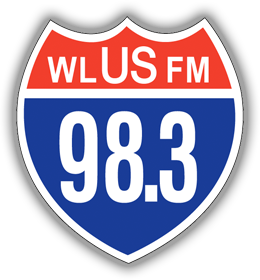Storm damage restoration services in Grapevine
A natural disaster can disrupt lives significantly. When the storm season arrives, floods are a given. But floods may be caused by reasons other than a natural disaster. It is essential to be educated about the various types of floods and their impact on property and lives. This enables adequate preparation to prevent or mitigate flood damage. SERVPRO, one of the top storm damage repair services in Grapevine/NE Tarrant County, deep dives into the various types of floods and their associated risks.
1. Flash floods
Six hours of heavy rainfall can cause the rapidly moving water to rise and cause severe property damage. Unpredictable and dangerous, these flash floods can sweep across a relatively small area and leave no time to evacuate or prepare.
Usually caused by severe weather events such as thunderstorms, hurricanes, and tropical storms, flash floods can also be caused by a dam or levee breaking or a mudslide. These swift-moving waters can trigger mudslides, damaged bridges, uproot trees, or heavy objects such as trucks and boulders. Homes and commercial properties can suffer severe structural damage, foundation damage, appliances damage, and mold infestation.
The impermeability of the soil makes urban areas more susceptible to flash floods than suburban or rural areas. Moreover, the neighborhoods near floodplains and blocked drainage are prone to flash floods.
2. Coastal floods
High winds, tides, heavy rainfall, or storm surges that move towards the coast during high tide cause the sea levels to rise. After that, powerful waves breach the coast’s dune or dike, causing coastal floods. Fewer defenses and lower elevations make certain coastal areas more prone to these floods.
Some of the risks of coastal flooding are drownings, injuries, sickness due to exposure to contaminated water and mold growth, and other health problems. Residents must be aware of the different levels of coastal flooding and the dangers they pose:
- Minor: Low likelihood of property damage and not directly life-threatening
- Moderate: Elevated probability of property damage and possibly life-threatening
- Major: Significant likelihood of property damage and seriously life-threatening
3. Fluvial floods (river floods)
When the water overflows across the riverbanks due to natural disasters such as extreme rainfall from tropical storm systems, long-lasting thunderstorms, combined rainfall and snowmelt, and ice jams, fluvial or river floods occur. This type of flood is much more predictable, allowing sufficient evacuation time and mitigation of economic losses.
4. Urban floods
The city or town drainage system often fails to absorb the water from heavy rain, and there is an evident lack of natural drainage in an urban area. This leads to urban or groundwater floods wherein the excess water overflows from the drainage system, spilling out into the streets. This makes driving hazardous and causes significant structural damage to buildings. If this water infiltrates the sewage pipes, widespread contamination becomes a massive threat to health.
5. Pluvial floods
Flat terrains in rural areas cannot absorb rainwater and make puddles and ponds instead. This excess standing water can seriously jeopardize the agricultural activities and properties in the area.
6. Sewage floods
Flash floods or unexpected heavy rainfall can disrupt sewage systems or treatment plants. The overwhelmed sewage systems then break down and release untreated sewage into water bodies. The harmful bacteria and chemicals in this category three water damage can cause some serious health effects. This type of storm damage must be addressed swiftly to help ensure mold growth does not occur. Swift action will also minimize exposure to contaminated water that can cause health-related issues.
The storm damage caused by these floods can only be mitigated by being aware and taking timely precautions. However, in cases of severe storm damage, residents and business owners must reach out to flood damage restoration services such as SERVPRO to help restore their properties to their pre-loss conditions.
Why SERVPRO?
- SERVPRO uses state-of-the-art equipment to bring the damaged property back to its original state. SERVPRO of Grapevine / NE Tarrant County is constantly updating its fleet and equipment so clients in Southlake, Grapevine, Keller, or can quickly access the services.
- With over 1,700 US and Canadian Franchise locations, SERVPRO is strategically positioned to respond faster to an emergency of any magnitude, including storm damage, water damage, and mold remediation.
- The SERVPRO staff is highly trained in storm damage restoration. They receive initial in-house training and constant skill up-gradation and acquire the regular IICRC-industry certification.
For storm damage restoration services, contact Team Shaw of SERVPRO of Grapevine / NE Tarrant County today at (817) 595-2506 or e-mail at office@servproheb.com.






















